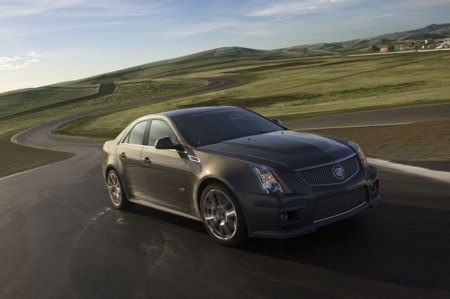GM Kills PVO: Performance Sub-Brands SS, V
Well, they didn’t kill the Corvette, but GM’s iced its performance tuning division. Automotive News [sub] reports on the car-nage.
GM today disbanded High Performance Vehicle Operations, which is based at the company’s suburban Detroit technical center, and redeployed its engineers, said spokesman Vince Muniga.
“All high-performance projects are on indefinite hold,” Muniga said. “The engineers are moving into different areas of the organization, and they will work on Cadillacs, Buicks, Chevrolets and Pontiacs.”
The recently mooted GM viability plan described Cadillac as “Performance Luxury with Aspirational Appeal.” Yes, well, the CTS-V and other V-variants will now soldier on without updates until . . . they don’t. By the same token, the veep describes Pontiac as “Youthful and Sporty.” So now we know that “sporty” will not be the same as “sports.”
Also on the shelf: the not so renowned HHR SS, the critically-acclaimed Cobalt SS and the Colorado V8. (The what?) Oh, and pistonheads hoping for a Camaro SS development program can go sing.
Muniga says The General’s hi-po specialists will have their souls sucked out of their bodies and then redeploy throughout the GM empire, annoying less G-whiz-oriented engineers and CAFE-crazed product developers with stories of “the good old days.”
More by Robert Farago


































Comments
Join the conversation
I was initially a little outraged by this but I might agree with the change in the end. They're still going to be selling the CTS-V, Cobalt SS, etc... for the immediate future, and that's fine for a few years so long as they can swing a few minor interior changes. I think they're in a relatively good position to milk these products for a bit considering their performance relative to respective classes. In the meantime I hope GM will (hopefully) excercise those employees in the right way, giving them active participation in product assesment and development wherever they are. If new cars come to market succesfully (such as the Cruze, Beat, whatever) then I certainly hope GM has the good sense to bring everyone back for full-time performance tuning once again instead of just slapping stripes and gills on economy cars.
Maybe I missed something, but I think this only matters to cars in development. They didn't say anything about stopping selling the performance cars they've already engineered and have in production. Regardless, I'm not too happy about this development.
actually, I'm not actually that optimistic. They just broke up a team of talented people and will doubtlessly scatter them about in various subordinate positions. A far better course would have been delegating this same team greater responsibility within the company, possibly making redundant, but hopefully training, those that they outperform.